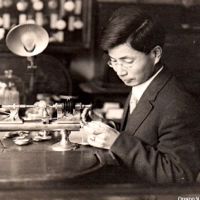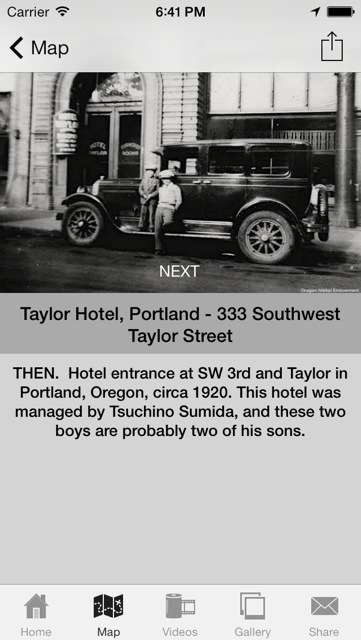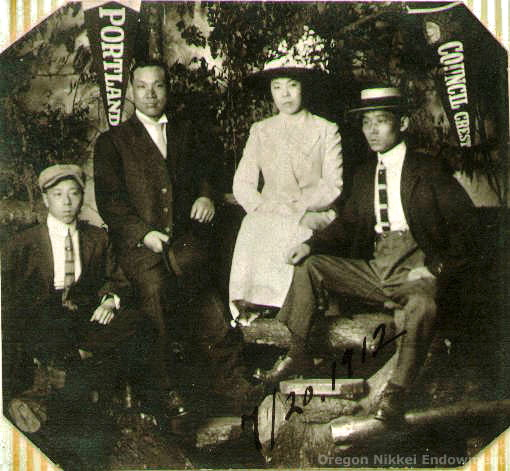If you follow my blog, you’re well aware of my advocacy for project-based learning. So when I was asked to teach a social studies methods class at the University of Portland, I naturally looked for a way to integrate a community-based project that would give my graduate and undergraduate pre-service teachers experience in PBL, the chance to work along side professional historians and an opportunity to make a difference in the community. For more on our course approach, see our class blog.
I live in downtown Portland on the edge of what is known as Old Town / Chinatown. Its a very diverse and historic neighborhood and once the center of a thriving Nihonmachi or “Japantown.” It’s now the home of the Oregon Nikkei Legacy Center, a small museum dedicated to “Sharing and preserving Japanese-American history and culture in Portland’s Old Town neighborhood, where Japantown once thrived.”
I approached the museum with a simple question – “What could you do with a dozen unpaid curriculum consultants?”
While planning my course, I approached the museum with a simple question – “What could you do with a dozen unpaid curriculum consultants?” And so our partnership began – my pre-service history teachers working with professionals at the museum to develop educational material to support their collection. I wanted my student so experience project-based learning from the perspective of the learner in the hopes that they would someday incorporate that approach into their teaching. I also wanted them to recognize that effective teachers are entrepreneurs, actively fostering external partnerships to support learning in their classrooms.
After a number of meetings we decided on three projects – an online lesson using curated videos detailing Japanese incarceration, a series of lessons to support an artifact-filled Museum in a Suitcase for circulation to Portland area schools and a iPhone app “Walking Tour of Japantown PDX.” All three projects would extend the reach of the museum and celebrate a once vibrant community that had fallen victim to wartime hysteria.
The app was going to take some technical assistance, so I reached out the Portland’s app community and was able to partner with GammaPoint LLC, PDX-based mobile app developer. We are worked with them to develop Japantown PDX, a native iPhone app walking tour of the historic Japantown in Portland. It features geo-fenced text, photos, audio and tools for sharing user reaction to the content via social media. We are also working with GammaPoint to make this project replicable in the k-20 space.
More on PDX Japantown: During the 1890s Portland was a hub from which Japanese laborers were sent to work in the railroads, canneries, lumber companies and farms throughout the Pacific Northwest. By the 1920s, a steady stream of Japanese “picture brides” had transformed a rough and tumble twelve-block section north of W Burnside between 2nd and 6th Ave into a more respectable Nihonmachi with over 100 Japanese managed businesses and professional office. Portland’s Japantown thrived until the WWII when Issei and Nisei were rounded up by federal officials and incarnated in inland camps. Portland’s Japantown was decimated. After the war a few returned to the old neighborhood, but many took up new residence in Portland’s postwar single family housing boom. The neighborhood had long been home to African-Americans and various immigrant groups. As Chinese-Americans began to predominate in the neighborhood, it gradually became known as Chinatown. Today, even most Portlanders are unaware of it’s heritage as Japantown.




